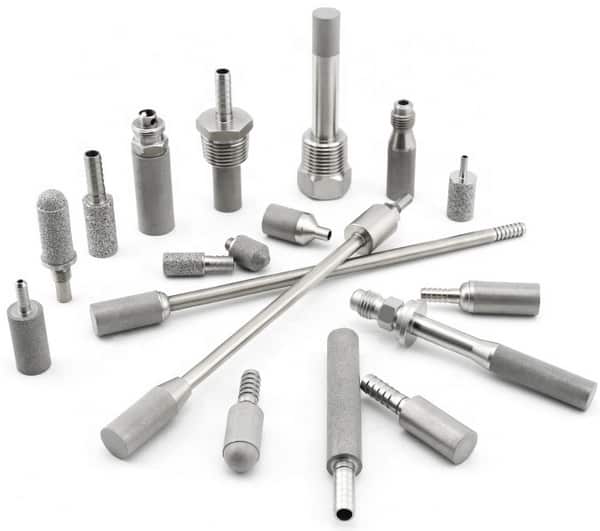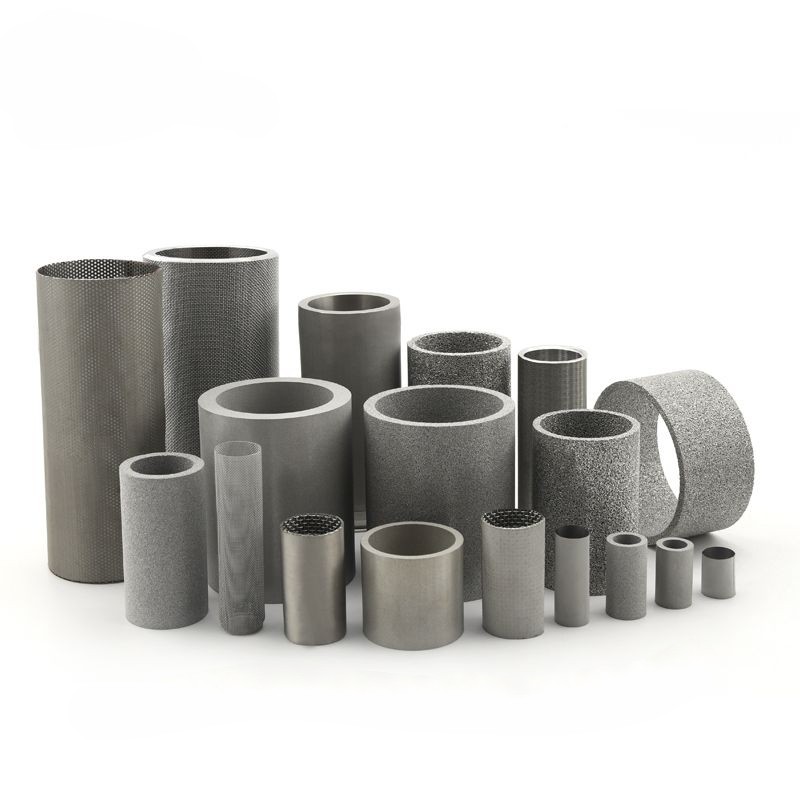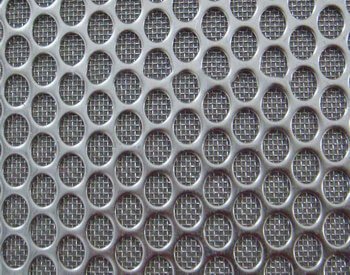Is your fermentation process working as efficiently as it could? The right sparger can make all the difference. Whether in biotechnology, pharmaceuticals, or brewing, understanding how spargers impact oxygen transfer and mixing is key to your success.
We’ll explain what a sparger in a fermenter is, explore the types of spargers used in fermenters, and show why spargers are more than just air distributors. You’ll also learn about sparger applications in different industries, key factors to consider when choosing a sparger, and tips for effective sparger use. Finally, we’ll compare spargers vs. aerators vs. injectors, helping you make the right choice for your fermentation system.
What is a Sparger in a Fermenter?
A porous sparger in a fermenter is a pivotal device utilized to infuse gases, notably air or oxygen, directly into a liquid medium during the intricate fermentation process.
This tool is prevalent in sectors like biotechnology, pharmaceuticals, and brewing, where it’s instrumental in delivering the essential oxygen or other gases for the optimal growth and metabolic activities of microorganisms or yeast. The porous sparger, distinguished by its array of minute, interconnected pores, ensures a fine dispersion of bubbles, maximizing the surface area of the gas in contact with the liquid. This efficient gas-liquid interaction facilitated by the porous sparger enhances the transfer of oxygen, thereby improving the yield and efficiency of the fermentation process.
The design attributes of porous spargers — such as their material composition, pore size, and configuration — can be customized to suit various fermentative environments and microbial requirements, thereby optimizing the conditions for biological processes and ensuring consistency and quality in end products.
How does a Sparger Work?
A sparger typically consists of a porous material or a series of small holes through which the gas is introduced into the liquid.
The gas is usually supplied from an external source, such as a compressed air system or an oxygen generator, and is then evenly distributed throughout the liquid by the sparger.
This allows for efficient mixing and oxygen transfer, promoting the growth and metabolism of the microorganisms or yeast.
The size and design of the sparger can vary depending on the specific application and requirements.
Some spargers are designed to create fine bubbles for better gas-liquid contact, while others may have larger openings for higher gas flow rates.
The choice of sparger depends on factors such as the type of fermentation process, the desired oxygen transfer rate, and the characteristics of the liquid being fermented. This sparger guide can help you learn more details about spargers.

Types of Spargers Used in Fermenters
Spargers in fermenters come in various types, like Porous Spargers, Bubble Spargers, and Membrane Spargers, each designed for specific fermentation needs. These spargers help with efficient gas transfer, oxygenation, and mixing. Let’s explore each type and its role in fermentation.
Porous Spargers
Porous spargers are made from materials like sintered metals, ceramics, or polymers. They produce fine, evenly distributed bubbles that maximize gas transfer. The small bubbles increase the surface area between the gas and the liquid, making them highly efficient, especially for large-scale fermentations. These spargers are commonly used in bioreactors and biotechnology applications where precise oxygen transfer is critical. Additionally, they are easy to clean and maintain, making them ideal for long-term use.
Bubble Spargers (Bubble Shooter)
Bubble spargers release gas in the form of bubbles into the fermentation medium. These spargers are typically used in small-scale fermentations due to their simplicity and low cost. However, they are less efficient than other types and can create more turbulence in the fermentation medium, potentially disrupting the process. Despite these disadvantages, bubble spargers are a good choice when high gas flow rates are not needed, and cost-effectiveness is a priority.
Membrane Spargers
Membrane spargers utilize gas-permeable membranes to introduce gas into the fermentation medium. This design provides a large surface area for gas transfer and is highly effective in large-scale fermentations. Membrane spargers can transfer gas at high speeds, ensuring efficient oxygenation in bioreactors. However, they can be more fragile and harder to clean, as the membrane can be easily damaged. This makes maintenance more challenging compared to other sparger types.
Surface Aerators
Surface aerators create turbulence at the surface of the fermentation medium, allowing gas to be absorbed into the liquid. These spargers are most often used in small-scale fermentations where high gas transmission rates are less crucial. While they are simple to use and inexpensive, surface aerators are less efficient than other spargers and tend to create more turbulence. This can lead to foam formation, which may interfere with the fermentation process.
Syringe Spargers
Syringe spargers use high-pressure gas jets to create turbulence, allowing gas to be absorbed by the fermentation medium. These spargers are affordable and easy to use, making them suitable for small-scale fermentations. However, they are less efficient than other types and can create excessive turbulence, potentially disrupting the fermentation environment. Their simplicity and cost make them a viable option for less complex fermentation processes.
Orifice Spargers
Orifice spargers release gas through small holes or orifices. They are effective in applications that require higher gas flow rates and are commonly used in fermenters with thicker media or where a consistent, high-volume gas flow is needed. While orifice spargers are simple and easy to clean, the larger bubbles they produce may not be as efficient at gas-liquid interaction as the fine bubbles from porous spargers.
Jet Spargers
Jet spargers inject gas at high velocities into the fermentation medium, creating turbulence and significantly enhancing oxygen transfer rates. These spargers are particularly effective in applications where high oxygen concentrations are required, such as aerobic fermentations. The strong mixing action helps to maintain uniform temperature and nutrient distribution throughout the fermenter. However, jet spargers can create excessive turbulence, which may negatively impact delicate microbial cultures if not carefully controlled.

Why a Sparger Is More Than Just an Air Distributor in Fermentation
Spargers do much more than simply deliver gas into a fermenter. Their design and functionality influence every aspect of the fermentation process, from oxygenation to foam control. Here’s how a sparger goes beyond being just an air distributor:
Oxygenation: Essential for Microbial Growth
The primary role of a sparger is to provide oxygen for aerobic fermentation processes. By introducing gas into the liquid in the form of fine bubbles, spargers maximize gas transfer efficiency, ensuring that microorganisms or yeast receive the oxygen needed for growth and metabolism.
Enhanced Mixing: Achieving Uniform Conditions
Spargers help mix the fermentation medium. As gas enters the liquid, it creates turbulence, ensuring even distribution of nutrients and heat. This uniform mixing is crucial for maintaining optimal conditions for microbial activity, avoiding dead zones, and ensuring consistent fermentation results.
pH Control: Stabilizing the Environment
Spargers also play a role in controlling the pH of the fermentation medium. By introducing gases like carbon dioxide, spargers help manage pH levels without the need for additional chemical dosing. This pH control is vital for preventing microbial growth imbalances and optimizing fermentation efficiency.
Temperature Control: Subtle Regulation
While spargers are not a primary temperature control system, they can assist by introducing cool or preheated gas, helping to maintain stable temperatures during fermentation. This subtle regulation complements other temperature control strategies, particularly during early or high-activity fermentation phases.
Foam Control: Preventing Process Disruptions
Spargers help reduce foam formation during fermentation. By breaking up foam or preventing its buildup, spargers maintain efficient mixing and reduce the need for antifoam agents. This ensures a smooth fermentation process and prevents foam-related issues, such as overflow or reduced working volume.
A sparger is far more than just a gas delivery tool—it’s an integral part of optimizing fermentation. From controlling oxygen transfer to mixing, pH regulation, temperature control, and foam management, spargers influence key aspects of the fermentation process. Understanding and selecting the right sparger for your system is essential for achieving consistent, high-quality results.
Applications of Spargers in Fermenters
Spargers are widely used in various industries for different fermentation applications:
Biotechnology
In biotechnology, spargers are commonly used in the production of biofuels, enzymes, and pharmaceuticals.
They provide the necessary oxygen for the growth of microorganisms or yeast, allowing them to produce desired products efficiently.
Pharmaceuticals
In the pharmaceutical industry, spargers are used in the production of antibiotics, vaccines, and other therapeutic products.
They ensure optimal oxygen supply for the growth of bacteria or yeast cultures, which are essential for the production of these pharmaceuticals.
Brewing
In brewing, spargers play a crucial role in the fermentation of beer.
They provide the necessary oxygen for yeast growth during the initial stages of fermentation, ensuring proper fermentation and the development of desired flavors and aromas.
Wastewater Treatment
Spargers are also used in wastewater treatment processes, where microorganisms are employed to break down organic matter.
The sparger supplies oxygen to the microorganisms, facilitating their metabolic activities and enhancing the efficiency of the treatment process.
Food and Beverage
In the food and beverage industry, spargers are utilized in the production of various fermented products, such as yogurt, cheese, and sauerkraut.
They provide the necessary oxygen for the growth of specific microorganisms, contributing to the desired texture, flavor, and preservation of these products.

Factors to Consider when Choosing a Sparger
When selecting a sparger for a fermenter, several factors should be taken into consideration:
Fermentation Process
The specific requirements of the fermentation process, such as the type of microorganism or yeast being used, the desired oxygen transfer rate, and the duration of the fermentation, will influence the choice of sparger.
Different processes may require different sparger designs or materials.
Gas Flow Rate
The required gas flow rate is an important consideration when choosing a sparger.
Some applications may require higher gas flow rates to achieve optimal oxygen transfer, while others may require lower flow rates to prevent excessive foaming or agitation.
Vessel Size and Volume
The size and volume of the fermenter vessel will determine the size and configuration of the sparger.
Larger vessels may require multiple spargers or specialized designs to ensure even distribution of the gas throughout the liquid.
Compatibility with Liquid
The compatibility of the sparger material with the liquid being fermented is crucial to avoid any contamination or adverse reactions.
Certain liquids may require specific sparger materials, such as stainless steel or food-grade plastics, to maintain product integrity.
Cleaning and Maintenance
The ease of cleaning and maintenance should also be considered when selecting a sparger.
Spargers that are easy to disassemble and clean can help minimize downtime and ensure consistent performance.

Tips for Using a Sparger in a Fermenter
To optimize the use of a sparger in a fermenter, consider the following tips:
Proper Placement
Ensure that the sparger is properly positioned in the fermenter to achieve optimal gas-liquid contact.
The sparger should be placed at a depth that allows for efficient mixing and oxygen transfer without causing excessive foaming or splashing.
Controlled Gas Flow
Monitor and control the gas flow rate to maintain the desired oxygen concentration in the liquid.
Too high or too low gas flow rates can affect the fermentation process and the quality of the final product.
Regular Maintenance
Regularly inspect and clean the sparger to prevent clogging or contamination.
Follow the manufacturer’s guidelines for maintenance and replace any damaged or worn-out parts as needed.
Consider Multiple Spargers
In large-scale fermentations, consider using multiple spargers to ensure even distribution of the gas throughout the liquid.
This can help prevent localized oxygen depletion and promote uniform growth of microorganisms or yeast.
Monitor Oxygen Levels
Regularly monitor the oxygen levels in the fermenter to ensure that they are within the desired range.
Adjust the gas flow rate if necessary to maintain optimal oxygen concentrations for the fermentation process.
Sparger vs. Aerator vs. Injector: Key Differences in Fermenters
Choosing the right gas delivery system is crucial in fermentation. Spargers, aerators, and injectors each have unique methods for introducing gases. Below, we compare them based on gas transfer efficiency, mixing capabilities, and turbulence generation, helping you choose the right tool for your fermentation needs.
|
Aspect |
Sparger |
Aerator |
Injector |
|
Function |
Delivers gas in fine bubbles for oxygen transfer |
Creates turbulence on the surface for gas mixing |
Injects gas at high pressure for fast gas transfer |
|
Application |
Ideal for aerobic fermentations and bioreactors |
Used for large-scale fermentations, wastewater treatment |
Used in high-demand aerobic fermentations |
|
Gas Transfer Efficiency |
High efficiency in gas transfer |
Lower efficiency in oxygen transfer compared to spargers |
Efficient at high gas flow rates |
|
Mixing |
Promotes uniform mixing with minimal disturbance |
Primarily used for mixing in large volumes |
Provides some mixing but can disturb delicate cultures |
|
Turbulence |
Creates minimal turbulence |
Creates moderate turbulence |
Creates high turbulence |
|
Ideal Usage |
Precise oxygenation in high-precision applications |
Broad gas distribution and mixing in large fermentations |
High oxygen transfer in high-flow applications |
Wrap Up
A sparger is a crucial component in a fermenter, providing the necessary oxygen for the growth and metabolism of microorganisms or yeast.
It promotes efficient mixing and oxygen transfer, enhancing the success of fermentation processes in various industries.
When choosing a sparger, factors such as the fermentation process, gas flow rate, vessel size, and compatibility with the liquid should be considered.
By following proper placement, controlling gas flow, and conducting regular maintenance, the use of a sparger can be optimized to achieve optimal fermentation results.
let Saifilter’s expertise guide you to the perfect micron-rated filter today. Your journey toward purity is just one click away. Choose Saifilter for a safer, cleaner liquid now!